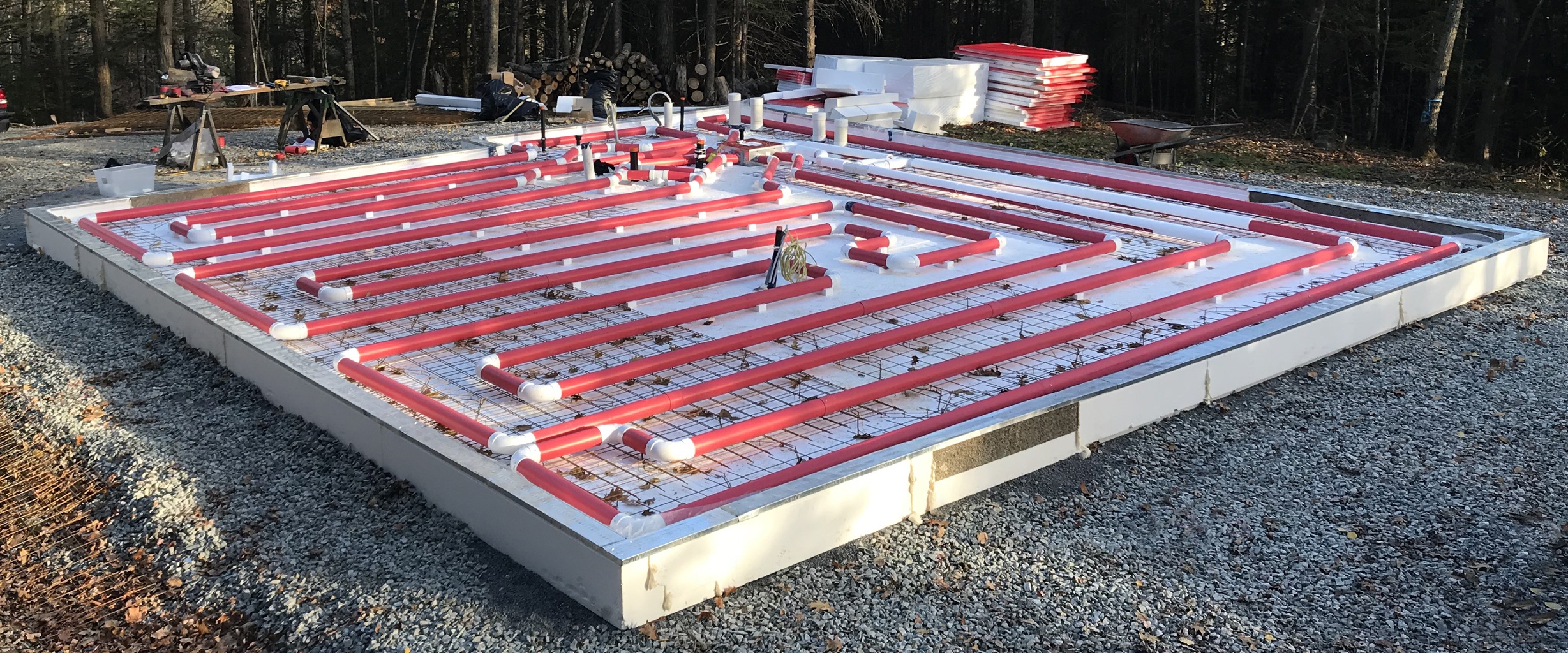

In general, both radiant systems cost between $1 and $5 per day. The two systems have similar operating costs, although a hydronic radiant heat system often runs a little less expensive since the hydronic system retains more heat, so the system won’t need to run as long. Alternatives include window AC units and ductless air conditioning.

However, this will come at a price that could increase if you need to add a chiller or a dehumidifier.

Instead, you’d want a geothermal cooler or chilling unit installed in the ceiling, which requires additional tubing. Some radiant systems can be used for cooling as well as heating, although an under-floor system isn’t practical for cooling since cool air sinks. Installing a water heater can run from $770 to $1,450. Similarly, if your water heater isn’t of sufficient capacity to add the floor heating system, you’ll need a new one. If your water heater is old, it and possibly the pipes may need replacing. If the contractor is located a significant distance from the materials supplier, that could also affect the price you pay.Ī hydronic floor heating system requires a water heater or boiler to heat the water that circulates underfoot. If you live in a remote area or at a great distance from the contractor’s headquarters, you may have to pay more for the installation because the contractor has to transport laborers and materials. Vinyl typically costs $2 to $15 per square foot, while hardwood floors can run $10 to $25 per square foot. The materials themselves can also vary widely in cost. Labor costs can be vastly different around the country, increasing the price considerably. The biggest percentage of radiant flooring cost is labor, which makes up about $8 to $12 per square foot, while the cost of materials is only about $1.50 to $2 per square foot. However, when it comes to operating costs, the hydronic system costs less to run because water retains heat for an extended period.
#Radiant floor heating cost canada install
The ability to install the electric system as mats contributes to its lower cost. Electric systems cost between $8 and $15 per square foot installed, while hydronic systems average between $6 and $20 per square foot. There are two basic types of radiant floor heating: electric and hydronic. When contracting a project priced by the square foot, you can expect the price to be higher for more square footage. Marble is at the top end, costing $12 to $60 per square foot. Concrete is also relatively inexpensive, at $4 to $6 per square foot. For example, vinyl is the least expensive, averaging $2 to $15 per square foot. The low profile baseboard will give you more wall space and freedom to locate furniture and drapes near, or even touching, the baseboard.While radiant floor heating can be used with most types of floors, it will cost more to install the system under certain kinds of floors. It can be installed quickly, without costly ductwork and the related mess. The Slant/Fin hot water system is a deal choice for comfortable, cost-efficient heating. In addition to our in-floor heating, Bryan’s Fuel also offers radiant baseboard heating systems. They are trained and certified to design and install a wide variety of systems, from a small garage expansion to 10,000 square foot homes with hybrid home comfort systems. These heating systems can also be installed outdoors for melting snow on driveways or walkways.Įach of our comfort advisors are qualified in Hydronic Design. Individual room heating control can be provided by zoning allowing you precise control over temperature throughout your home. Hydronic systems are a very efficient way of heating your home, providing an optimum and even delivery of heat to your living space. At Bryan’s Fuel, we always recommend using hydronic heating, which provides the more energy efficient option.

When choosing between underfloor heating systems, there are two main alternatives: hydronic and electric floor heating. You and your family will feel more comfortable - and you won’t waste your energy keeping the ceiling warm. Instead of the “ceiling down” method associated with forced air heating systems, the underfloor heating system produces a “floor up” heat distribution that creates consistent room temperatures. Radiant heat takes a new and energy-efficient approach to heating your home.


 0 kommentar(er)
0 kommentar(er)
